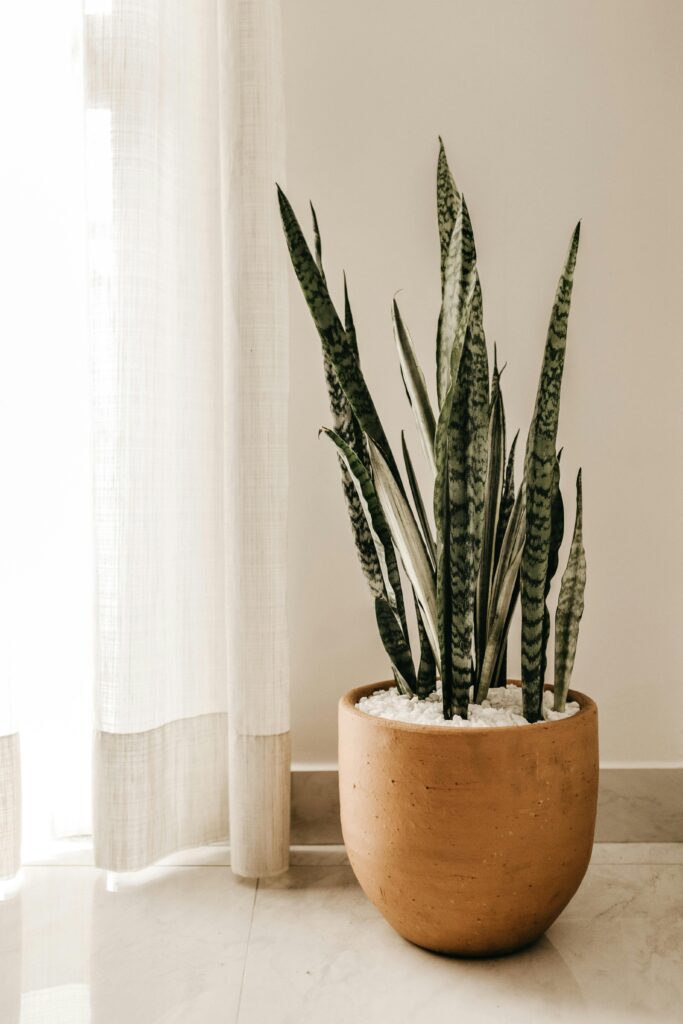
We spend most of our time at home, so it is fair to say that the quality of air we breathe in our humble abodes has the potential to affect our health significantly. It also, then, goes without saying that we should be doing all we can to improve our home’s air quality, So, without further ado…
Open Up… Within Reason
You’ve probably heard that throwing open the windows can help flush out stale indoor air and bring in a wave of freshness. This is partly true and definitely something you should do whenever possible—just maybe skip it if the pollen count is off the charts or your neighbors are having one of those bonfire parties that produce enough smoke to rival a volcano.
A balanced approach is key. If it’s a beautiful, breezy day, let Mother Nature do her thing. Even fifteen minutes of fresh air can work wonders. But if the air outside is more reminiscent of a smoggy dystopia, it’s okay to keep things closed up and rely on other methods, which we’ll dive into soon. The trick is to remember that your indoor environment thrives on circulation and renewal. Stagnant air is a breeding ground for dust mites, funky smells, and that unshakable sense that you’re in a stuffy elevator that never reaches the right floor.
Upgrade to New Windows, Because They’re More Than Just Glass
While we’re on the subject of letting fresh air in, let’s talk about windows. If your home’s windows are older than disco music and rattle every time the wind blows, they’re probably not doing you any favors. Aging windows can let in drafts, trap moisture, and contribute to inconsistent indoor temperatures—plus they might look like they belong in an 80s crime thriller, which isn’t exactly the aesthetic we’re going for.
New Renewal by Andersen windows, then, can be a game-changer for air quality and comfort. Modern designs often have better insulation, which helps maintain consistent airflow and prevent unwanted moisture buildup (bye-bye, sneaky mold). They can also be easier to open, so you don’t feel like you’re wrestling a stubborn alligator every time you want a breeze. And if the energy savings from better insulation doesn’t convince you, the overall style upgrade might. After all, who doesn’t love the combo of practicality and curb appeal?
Adopt a Green (Thumb) Army
If your idea of “indoor nature” is a wilted salad in the fridge, it might be time to consider bringing in some houseplants. Not only do plants add a lush, Instagram-worthy vibe to any room, but many varieties are also known to help purify the air by absorbing toxins and releasing oxygen.
A few classic easy-care choices include spider plants (they’re not as scary as they sound), snake plants (again, not actual snakes involved), and pothos (which might just be the superhero of low-maintenance greenery). Place them near windows or in spots that get decent light, give them a bit of water, and let them do their thing. Before you know it, you’ll be living in a mini jungle—minus the tigers and humidity.
Just remember that overwatering can lead to mold in the soil, which is counterproductive. A quick check before you water—stick a finger in the dirt; if it’s still damp, hold off—is all it takes to keep your plants (and your air) healthy.

Kick Out the Chemical Culprits
This might sound dramatic, but your cleaning supplies, air fresheners, and even some furniture finishes could be the villains in your home’s air quality saga. Many conventional products contain chemicals known as volatile organic compounds (VOCs), which can linger in the air and irritate your lungs. If your home smells like an over-chlorinated swimming pool or a synthetic “pine forest” every time you clean, that’s your sign to swap those products for something a bit more natural.
Look for cleaners labeled VOC-free or eco-friendly. You can also whip up your own cleaning solutions with pantry staples like vinegar and baking soda. Sure, you might feel like an old-timey alchemist, but your lungs will thank you for it. And if you love the scent of a freshly scrubbed home, try essential oils. A dash of lemon or lavender can go a long way, and you won’t have to choke on harsh fumes while you scrub the bathtub.
Ventilation, ventilation Ventilation
Exhaust fans and range hoods exist for a reason. If you’re the type to cook a storm of bacon in the morning or fry up exotic dishes at midnight, your kitchen can quickly turn into a mini smokehouse. This not only sets off your smoke alarm (sorry, neighbors!) but also pumps fine particles into the air that stick around long after dinner is done.
Turning on the range hood or exhaust fan is a no-brainer if you want to reduce those airborne grease particles. And if you’re really committed to keeping your home’s air squeaky clean, crack a nearby window for extra ventilation. If you don’t have a range hood or if yours makes a noise like a dying spaceship, consider upgrading. It’s a relatively small investment compared to the benefits of not breathing in last night’s stir-fry for the next week.
Say Hello to Regular Maintenance
Nobody wants to hear it, but cleaning and maintenance routines are the unsung heroes of good indoor air. Dirty air filters in your HVAC system can recirculate dust, allergens, and who knows what else. Over time, that buildup can create an air quality nightmare, plus it forces your system to work harder, which can lead to higher utility bills and more frequent breakdowns.
A monthly filter check can keep your airflow crisp and your system happy. If your filter looks like it’s wearing a sweater, it’s time to change it. The same goes for air purifier filters if you use those, as well as your vacuum bag or canister if your vacuum is old-school. It’s not the most glamorous chore, but it’s definitely worth your while. Think of it as giving your home a mini-spa day every so often.
Watch That Humidity, Friend
High humidity might make you think of a tropical vacation, but in your home, it’s more likely a breeding ground for mold and dust mites. On the flip side, air that’s too dry can irritate your nasal passages and make you feel like you’re living in a desert. Striking a happy medium is the goal—somewhere around 40-50% relative humidity is often ideal.
A simple hygrometer can tell you if you’re in the danger zone. If you find your home is too moist, a dehumidifier can help, especially in damp areas like basements. If it’s too dry, a humidifier can be your best friend during the winter months when the furnace sucks the moisture out of the air. Just remember to clean your humidifier regularly, unless you’re looking to breed some funky bacteria.
Breathe deep, live better!